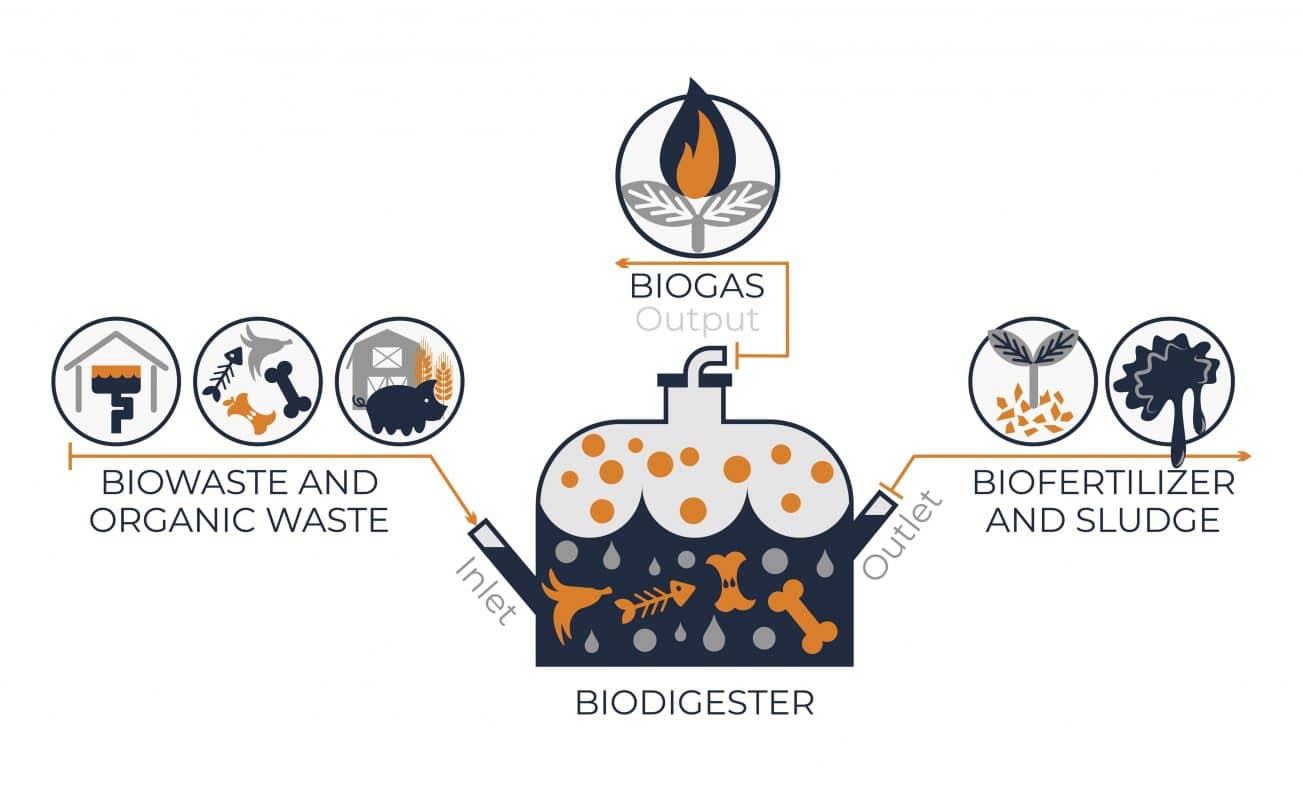What Is Anaerobic Digestion?
The process of anaerobic digestion dates as far back as the 19th century. The process itself has evolved over time from open lagoon systems, through to creation of closed tanks to get optimum yield from the process.
So, what is it? Anaerobic digestion is the breakdown of material in the absence of air. Feedstock is fed into the digester tanks and left to sit there at a set temperature. Over time the material goes through different stages and gets broken down by microorganisms, with the result being a methane rich biogas.
Once the reaction has taken place, the methane can then be used to power a combined heat and power (CHP) unit, which often is used to generate electricity to allow sites to be self-sufficient. Any unused electricity is sold back to the grid. Some sites take the methane and export it straight back into the grid as soon as it is extracted from the process.
As a bonus, the digestate that is left in the system once the reaction has occurred is a nutrient rich fertiliser, which farmers can then spread on their land.
How Does AD Cut Emissions?
Anaerobic digestion is a renewable energy system, as the feedstock can be replenished at no harm to the environment. Often, cow manure is used for the feedstock, which is the first stage of the process. Then, at the end of the process the nutrient rich digestate is then spread onto the fields in which the cows eat the grass from. This means it is seen as almost net zero carbon emissions, making it a popular choice in the drive for renewable and clean energy.
In some cases, food waste is used as a feedstock. This means that the food waste that would usually decompose and emit harmful gases into the atmosphere is now being used as the input to a system that can then be turned into energy.

